It’s Eva. This is thought number [thirteen].
I read this thing on facebook today that got me a bit frustrated. It was a post saying how versatile artists are, and how they’re used to having multiple jobs and hustling to make ends meet, especially in challenging times. And the thought behind this was very well-intentioned and I believe it’s true as well, but what frustrates me is the romanticization of that. Because we’re forced to do that hustle, because often being an artist is undervalued and not seen as a job in Canada. There will be a significant amount of people – especially emerging artists – who will come out of this and decide the arts aren’t possible for them. Precarity isn’t romantic. I’m hoping that rather than being so impressed with how scrappy artists can be, we can out of this thankful that artists exist, because of the vital service they do for their communities.
It’s Eva. This is thought twelve.
Today I was reading a play that I’ve been writing for the last year or so and I found it hard to hook into because I’m so consumed with the immediate moment. And I had to clock for myself that inside of this crisis my humanity is still existent. I’m still grappling with the same problems on top of this. So for me my desire is to not let this crisis consume me, and the art that I make, but how can it explode it? How can my plays not necessarily be about COVID, but how can they be about connection, need for each other? That’s my big ponder right now, and it’s hard, when something’s slamming in your face. Daily.
It’s Eva. This is thought eleven and it’s about the coolest fucking people in the world, and those are my parents.
They’re across the country right now and they’re both in their like, mid-late seventies and my dad, he came to Canada in the seventies and worked as an engineer, and then after he retired he started writing stories and self-publishing them, and then recently self-published this memoir called The Road From Mandalay which is all about how his family came from Burma and then moved to India and then to Pakistan and he wrote all this during his retired years. And then my mom – who is also super cool – she worked as a paediatrician when she came to Canada and then when I was little, she started this charity called Pound Rescue that rescues abandoned dogs and cats. She’s touched a lot of lives – human and non-human – and she’s still working right now because there are still a lot of little lives that depend on her. So I’m worried, but I’m grateful because they’re the most compassionate people I know.
It’s Eva Barrie. This is thought number ten.
I miss tapping someone on the shoulder when they’ve dropped something.
I miss two-handed handshakes that feel really strong, but caring at the same time
And
High-fives that went embarrassingly wrong, and the more embarrassing decision to try the High-Five again.
Grabbing your friend’s hand out of excitement
Or out of compassion.
The awkward and subtle “whoops sorry” when you brush someone’s hand against yours in the subway.
Stifling a laugh when a kid grabs you, thinking you’re their parent.
Passing someone a kleenex.
Taking a photo for a tourist on their cellphone.
The quick point coupled with an eyebrow raise to see if a parent wants help lifting a stroller onto a street car.
Moving my backpack so someone can sit right beside me.
I miss strangers.
It’s Eva. Thought…nine? I think. And I’m longing for libraries.
One of my favourite libraries is the Calgary Public Library. It’s beautiful! It’s architecturally stunning and one of the reasons I love it so much is that they have all this programming and don’t quote me on this, but I’m pretty certain, they have child-minding programs for parents who are taking adult learning classes there. Which I think is really inspiring and wonderful. There’s also a mix of ages, which I think is way too rare. And the other reason that I love libraries so much is that they’re a place – they’re a public place – where you don’t have to pay. So anyone from any income level can be there and gather and be together and I think that’s really important. And in libraries I get very overwhelmed and melancholy because I think about all the books that exist that in my lifetime, I’ll never be able to read. And I think that’s a really beautiful reason to get melancholy.
It’s Eva. Thought eight. I’m thinking about Uncertainty.
We do a lot to feel certain, and we feel good when we feel certain – like we’ve succeeded, or we’ve done something right, really right. And now, a lot of us are looking at our calendars and seeing a lot of question marks where there used to be periods. I’ve been doing the emotional rollercoaster of that, and right now, on my rollercoaster ride, I’m trying to remind myself that uncertainty, the unknown, can bring about anything. Anything is possible. It can truly shake up the status quo in a very big way. It can bring about profound changes that Certainty couldn’t. I – and we – have a chance now, for something brand new. And that could be a great thing, that could be a terrible thing, the point is, it could be anything.
Eva. Thought seven, with a flurry of good things.
Good thing number one: I once met a dog that if you said SPEAK it would bark, but if you said WHISPER it would bark softly.
Good thing two: The book the Red Tent by Anita Diamant. It’s so good. It just makes me want to have my period and live in a yurt.
Good thing number three: My family gave me a personalized puzzle last year, and I finally got around to it, and I think it’s my childhood dog Molly.
Good thing four: Molly!
Good thing five: People offering support to individuals who need to self-isolate right now. You’re amazing! I love you. Keep going!
Good thing six: The Calvin & Hobbes strip where Calvin finds a hurt bird and then his mom teaches him about loss.
Good thing seven: I’m mentoring a young playwright with Tarragon right now and they wrote an amazing third draft this weekend.
Good thing eight: The BBC interview where that guy is being interviewed and then his kid bursts in and then his other kid bursts in and then his wife – it’s just … it’s comedy gold.
I’m running out of time. I want to know your good things. So share them. The world can be good. If we want it to be.
[sounds of children yelling and playing] It’s Eva. Thought five.
I’m currently sitting outside of a little… I wanna say they’re three-five [years old]… and it’s a ballet class where they’re currently throwing soccer balls at each other. So I’m thinking about imagination, I’m thinking about how we foster fun and creativity and recklessness into young people. I’m thinking about how this is probably thought six and I said thought five. And I’m thinking about how kids sometimes have the most fun when they’re alone… and how delightful that is. I also wish that I could take this class.
It’s Eva, thought five.
I’m thinking about the coronavirus and capitalism, and – yep, here it is, here’s my socialist rant – and how we’re asking people to stay home and not work, but living in a society that judges someone’s worth in the society by their working non-stop. I’m thinking about how staying home, staying isolated, is a privilege. I’m thinking about how these moments award “fend for yourself” behaviour: like the more toilet paper you have, that means that you…that is a direct correlation of how much you love and protect your family. I’m thinking about healthcare systems that don’t protect everyone. I’m thinking about compassion and caution. And I’m feeling like those two things can feel really far apart in moments of panic.
It’s Eva. This is my fourth thought.
The other day on Facebook I saw a photo of a kid, who’s the kid of one of the very first directors who invited me to assist them (so she’s like 7 or 8 or so now). And what’s really exciting is that I can track the length of my career by this child’s life. And in essence, we’re growing together. She’s gone from being cooked inside her mama, to learning things about the world. And nowadays she’s learning math, and how to make friends, and meanwhile, I’m asking all these questions about the world, and in the next couple years, she’ll learn new math, like…I guess that graph shit, with the sine and cosine and all that. And she’ll also be learning how fall in love. And I’ll be learning new things on how to be a human and an artist. And I really love that we’re learning and growing together. And I’d love the amount of learning I’m doing, to equal the amount she’s learning. Or maybe I should just relearn some of that math crap she’s learning but I dunno, that doesn’t sound as fun.
Hey it’s Eva, and it’s my third thought.
On the weekend I got to see the Imagine Van Gogh Exhibit in Montreal which was super cool and it got me thinking a lot about how we love to attach narratives to an artist’s work. It’s really delicious, it’s really satisfying to imagine… and craft these stories around why people created what they created. And I think about it in terms of modern playwriting and directing and how we really want to define a person by their work, or like a solo piece of work. And that feels really… it feels like a lot of responsibility. And maybe that comes from scarcity mentality, that we feel like we only get one shot at something, but it doesn’t feel like it reflects the ephemeral nature of theatre, or the ephemeral nature of being a human being.
It’s Eva Barrie, this is my second thought.
I’m thinking about mistakes; I’m thinking about failure. I’m curious about the difference between the two.
I feel like sometimes when I make a mistake, or when I feel like I’ve failed, I stop. And I don’t know how to move forward, and I feel really paralysed. And I feel a deep shame, often, and think about some of the people that I idolize or I put on pedestals, and I think “oh, they would never be so stupid as to do what I’ve just done.” And what a kind of bullshit way of thinking? But huh… I think we’re bred that way, a little bit. So I guess I really want to know about these people that I think are so fantastic, these arts-makers in Canada, these heavy-hitters… I want to know about their mistakes, their failures. Hey Sarah Garton Stanley…can you make that happen? Please, please?
My name is Eva Barrie and this is my first thought.
I’m thinking a lot about Lobbies. Or more so… I’m thinking about the conditions we create for people to experience a play or an event.
So one of my favourite theatres is the Schaubuehne in Berlin and there’s a bar in their lobby, with a table reserved for the artists of the production, so that afterwards, the artists can drink or hang out at the theatre, and therefore be accessible to the theatre goers. I think about how in Toronto our lobbies don’t offer that opportunity readily. We don’t think about lobbies as part of the artistic experience. They’re more a passage to the place where we will sit quietly and listen to the performance. But… if we want a vibrant theatre culture, if we want people to talk about plays, if we want to create nuanced and challenging plays that require a bit of discourse – maybe even between strangers – we need to set those spaces to have those conversations.


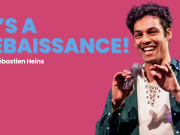
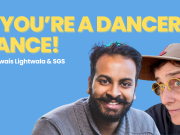



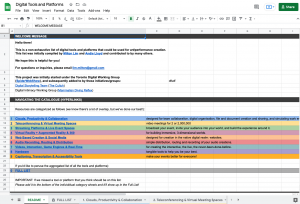
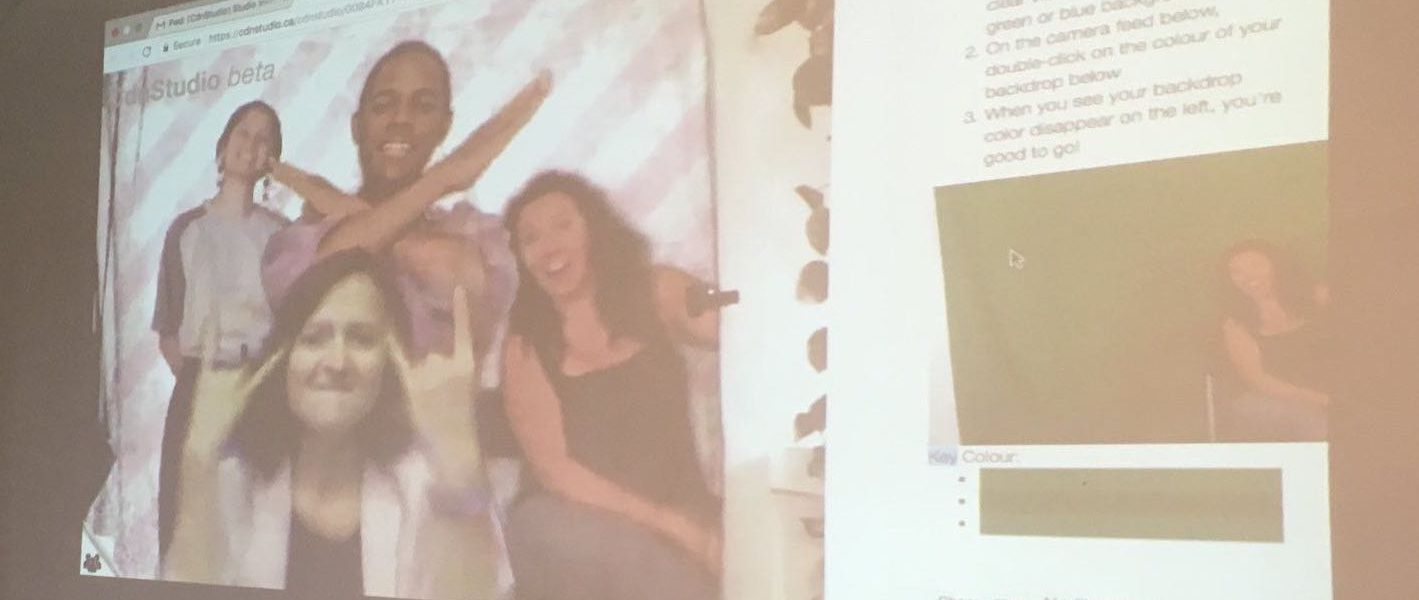
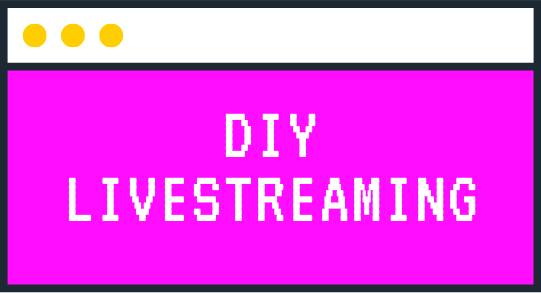
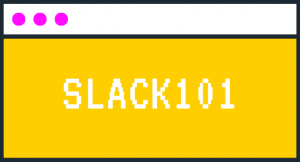
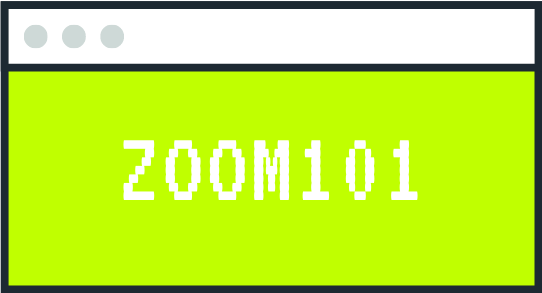
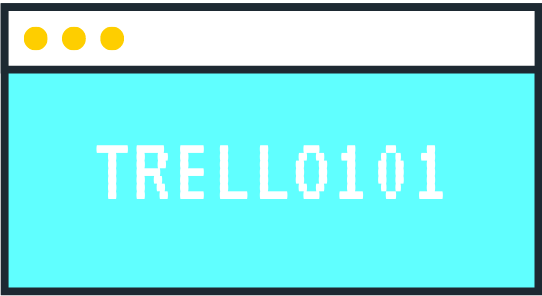
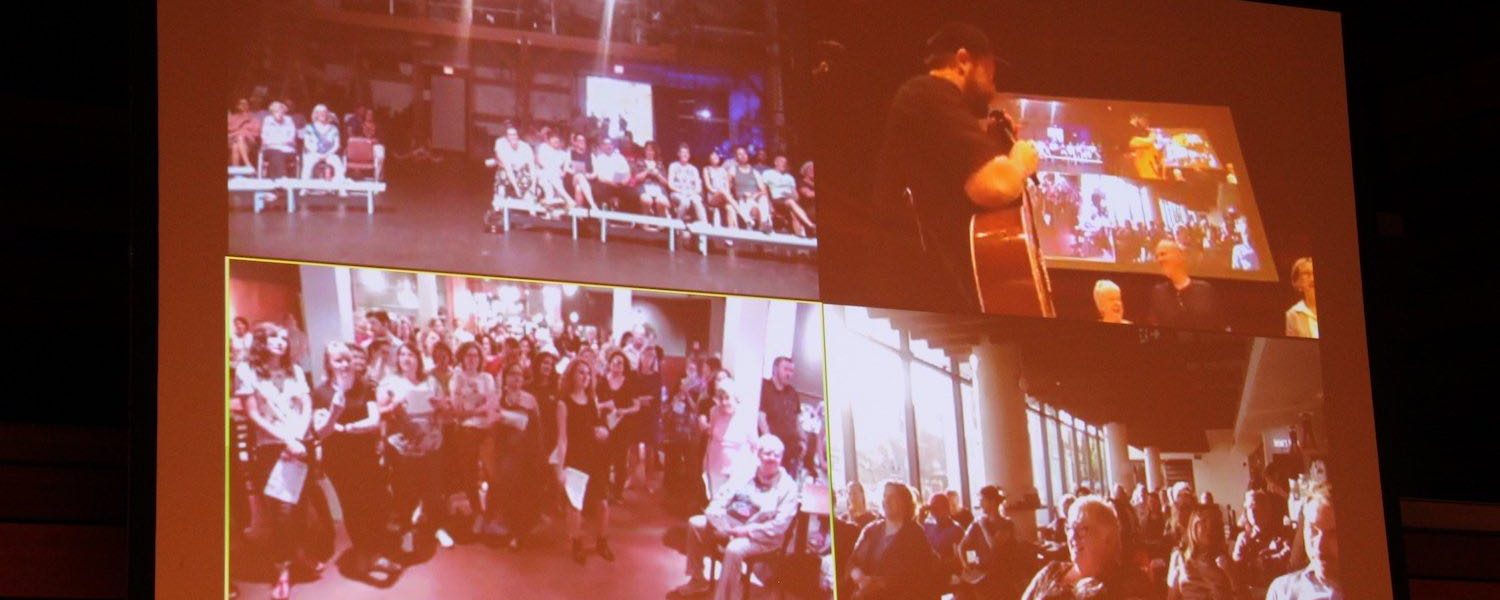
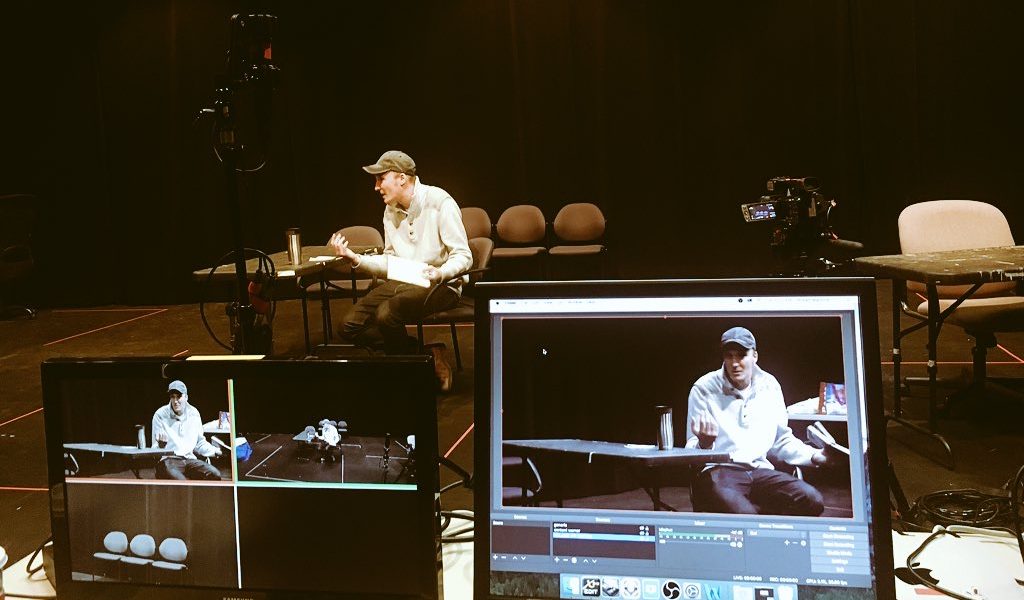
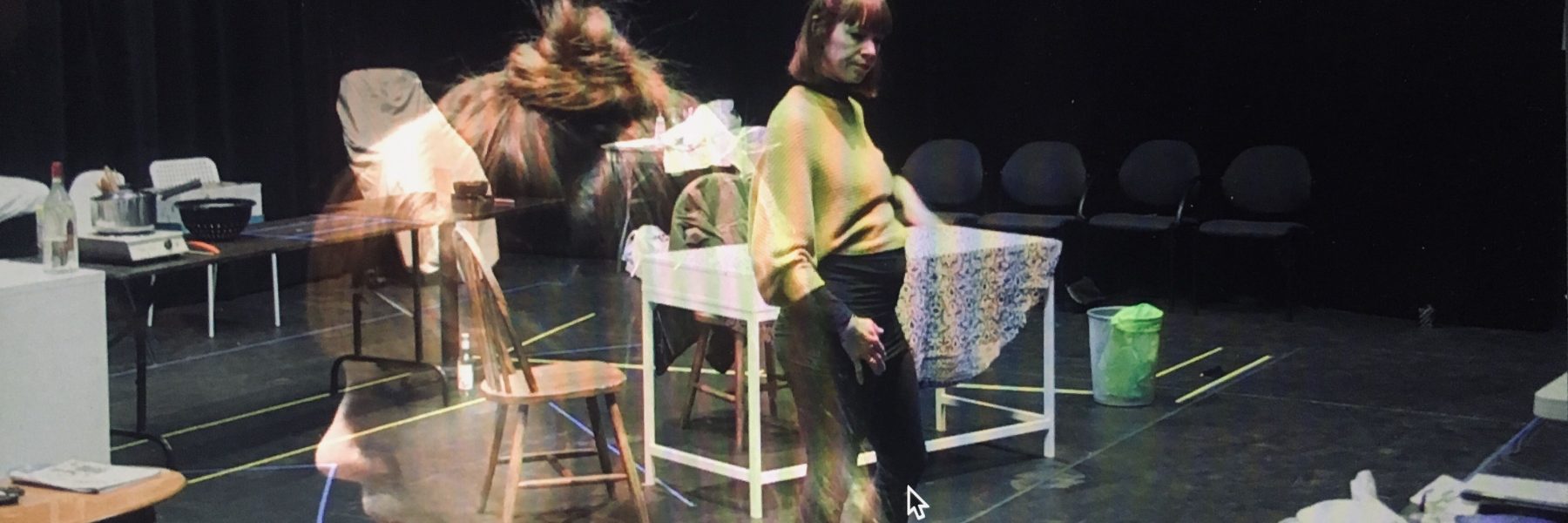

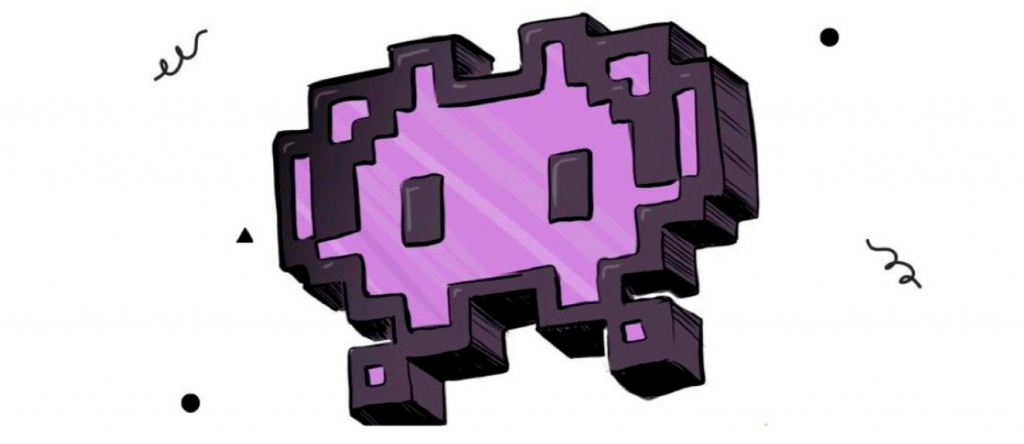
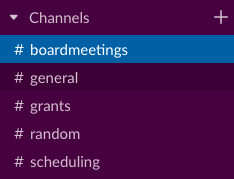 Think about Channels as chatrooms dedicated to certain topics or departments. This is how you can communicate with your team on specific topics, like email threads.
Think about Channels as chatrooms dedicated to certain topics or departments. This is how you can communicate with your team on specific topics, like email threads. 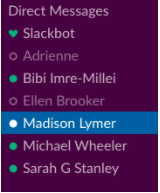 You can direct message anyone privately in your workspace.
You can direct message anyone privately in your workspace. 
